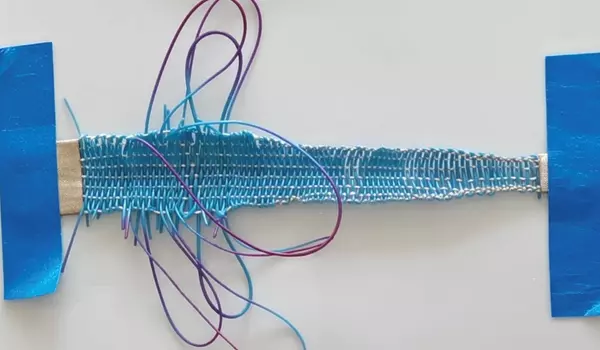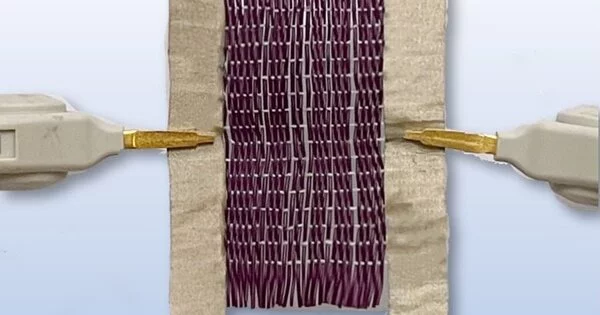Smart fabrics that can respond to temperature and electricity have the potential to transform industries ranging from fashion and wearable technology to healthcare and beyond. These fabrics are typically embedded with sensors and actuators, allowing them to detect and respond to changes in temperature or electrical signals.
A new smart material developed by researchers at the University of Waterloo responds to both heat and electricity, making it the first material to do so.
The novel design opens the door to a wide range of potential applications, such as clothing that warms up as you walk from the car to the office in the winter and vehicle bumpers that return to their original shape after a collision. The programmable fabric, which is made cheaply from recycled polymer nano-composite fibers, can change color and shape when stimulated.
As a wearable material alone, it has almost infinite potential in AI, robotics and virtual reality games and experiences. Imagine feeling warmth or a physical trigger eliciting a more in-depth adventure in the virtual world.
Dr. Milad Kamkar
“As a wearable material alone, it has almost infinite potential in AI, robotics and virtual reality games and experiences,” said Dr. Milad Kamkar, a chemical engineering professor at Waterloo. “Imagine feeling warmth or a physical trigger eliciting a more in-depth adventure in the virtual world.”
The novel fabric design is the result of a happy marriage of soft and hard materials, with a woven structure made of highly engineered polymer composites and stainless steel.
To weave the smart fabric, researchers developed a device similar to a traditional loom. The process that results is extremely versatile, allowing for design freedom as well as macro-scale control of the fabric’s properties.

The fabric can also be activated with lower voltage than previous systems, making it more energy-efficient and cost-effective. Furthermore, because of the lower voltage, it can be integrated into smaller, more portable devices, making it suitable for use in biomedical devices and environmental sensors.
“The idea of these intelligent materials was first bred and born from biomimicry science,” explained Kamkar, director of Waterloo’s Multi-scale Materials Design (MMD) Centre.
“Through the ability to sense and react to environmental stimuli such as temperature, this is proof of concept that our new material can interact with the environment to monitor ecosystems without damaging them.”
The next step for researchers is to improve the fabric’s shape-memory performance for robotics applications. The goal is to build a robot that can carry and transfer weight to complete tasks.





